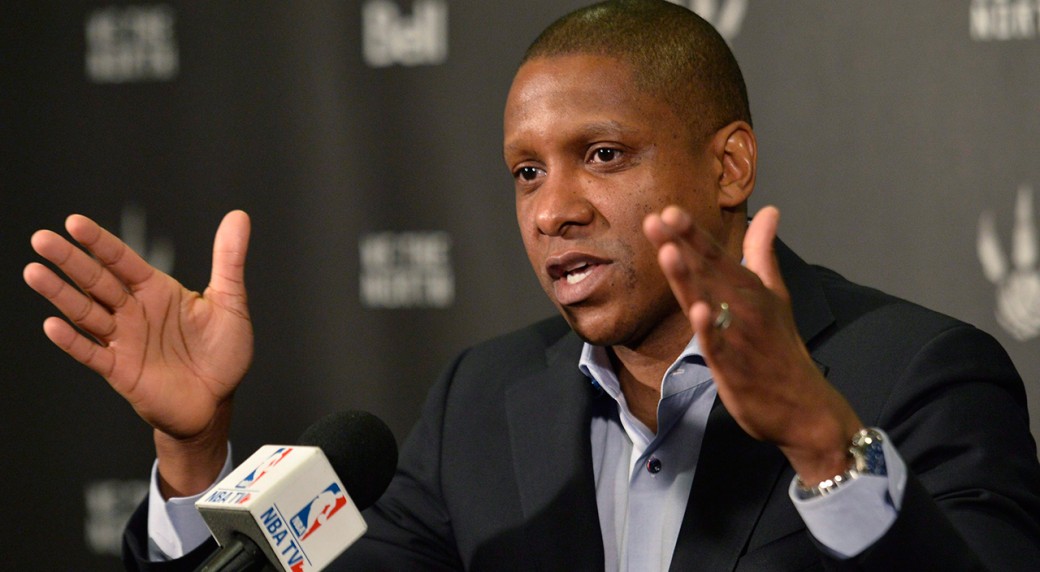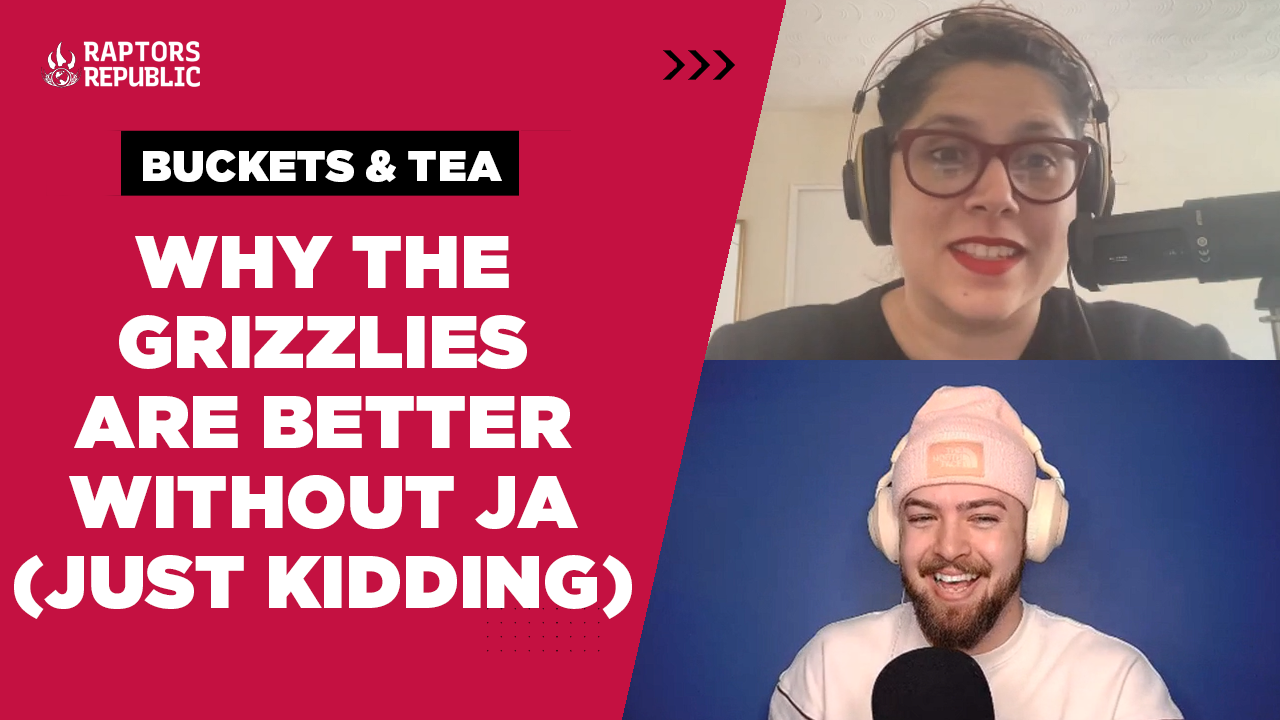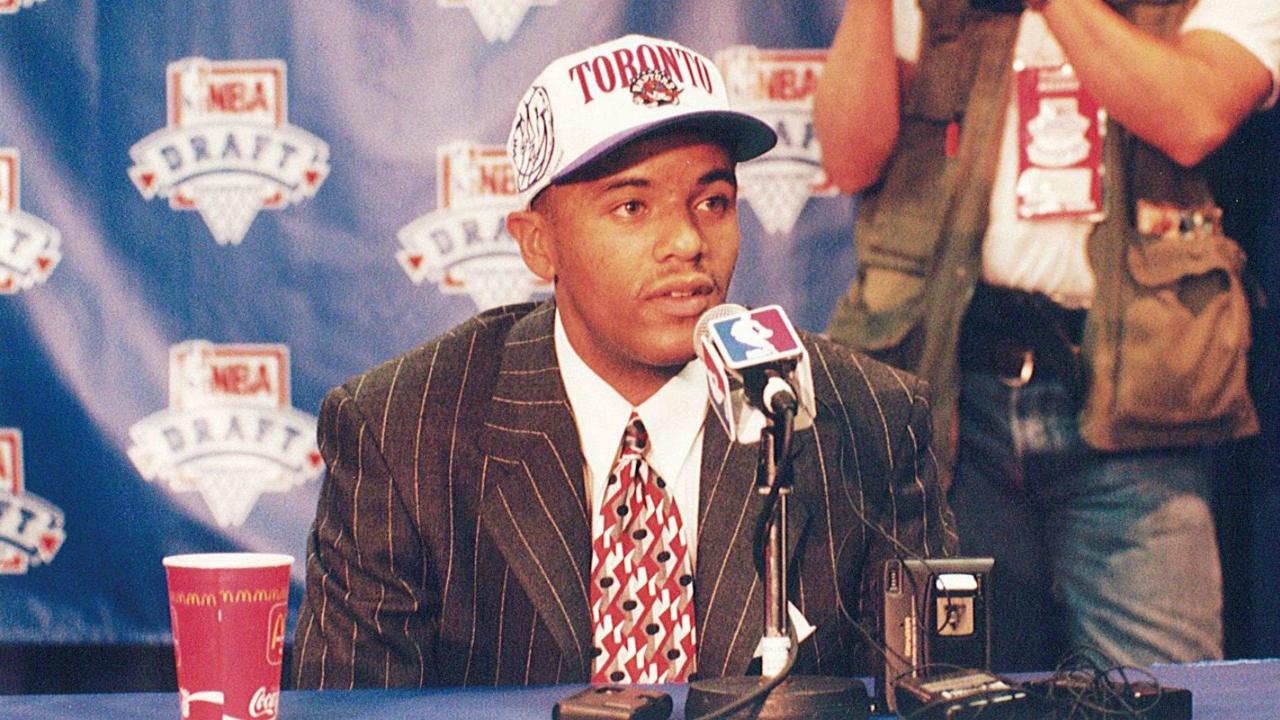It’s not hard to know which direction the Toronto Raptors are going. The franchise made the playoffs every season from 2013-14 to 2019-20, with all sorts of deep playoff runs — including a championship — to boot. Then the Raptors missed the playoffs, lost Kyle Lowry, and were on shaky grounds with their newly injured floor leader, Pascal Siakam. It looked bad for a minute there. But truly just a minute. The Raptors followed up that lost year with 48 wins — more than any season before 2013-14, when Lowry joined the franchise. Train, re-meet tracks.
Which makes this is a significant offseason. If the Raptors are going to start a new playoff streak, a new normal, then it starts now. The Raptors did, after all, lose in the first round to the Philadelphia 76ers. Toronto has plenty of paths to take to step forward as a team, but it has to take them. Satisfaction with 48 wins is not an option, especially for a brain trust led by Masai Ujiri that has repeatedly shown a home-run attitude and willingness to innovate to find competitive advantages. Here are the tools that they’ll be playing with.
Before we start, some love to Spotrac for their unbelievable offerings on the cap minutiae of the NBA. Couldn’t do things like this without them.
Players under contract
PG: Fred VanVleet ($21,250,000), Dalano Banton (Non guarantee – $1,563,518), Malachi Flynn ($2,145,720)
SG: Gary Trent jr. ($17,280,000), Svi Mykhailiuk (Player option – $1,878,720), Armoni Brooks (Non-guarantee – $1,752,638)
SF: OG Anunoby ($17,357,143), Scottie Barnes ($7,644,600)
PF: Pascal Siakam ($35,448,672)
C: Precious Achiuwa ($2,840,160), Khem Birch ($6,667,500)
That’s pretty much the core! And it’s locked in the next few years. Siakam, VanVleet, Anunoby, and Barnes are all locked in until at least the 2023-24 (after which the bill comes due, with Siakam and VanVleet unrestricted free agents after that season). Stability is the name of Toronto’s game, and as a result there’s not a whole lot of cap room. (More on that in a moment.)
That doesn’t mean inflexibility — the Raptors don’t really have any contracts that aren’t extraordinarily tradeable. Nothing is out of reach for other teams, and there are plenty of midrange contracts to make practically any deal work. Beyond that, outside of some around-the-edges deals, almost every contract should have plus or neutral value. Plenty of flexibility.
Restricted Free Agents / Cap Holds – $58,877,450
No need to get into the specific numbers because they kind of don’t mean anything tangible. They’re placeholder figures, and individual players’ cap holds are not 1:1 dollar amounts that can be opened up as cap space if the cap holds are renounced. But there are some significant names here — the relevant ones include contractual specifics. Bird and early bird rights are, practically speaking for the names below, the same in that they allow the team to go over the salary cap to re-sign these players. (Early bird rights limit what the team can offer these players, but because none of the above are close to max-salary guys, the difference doesn’t really matter here.)
PG: Nando De Colo, Jeremy Lin
SG: Justin Champagnie (Restricted – Qualifying Offer: $1,576,305, Two-Way), David Johnson (Restricted – Qualifying Offer: $1,576,305, Two-Way), Jodie Meeks
SF: Yuta Watanabe (Restricted – Qualifying Offer: $2,203,495, Early Bird)
PF: Thad Young (Bird), Chris Boucher (Bird)
C: Isaac Bonga (non-Bird) Lucas Nogueira, Jason Thompson
Basically, the Raptors control the financial futures of Champagnie, Johnson, and Watanabe. If they so choose, they can re-sign them or even match any contract they sign with another team.
The Raptors do not control the financial futures of Young and Boucher. They do control bird rights, meaning the team can go over the salary cap to sign them (which in many ways gives the Raptors a huge advantage in signing them because most other teams won’t be able to offer as much money as the Raptors). But they can’t match contracts that the two players sign with other teams. Say a low-money team like the Detroit Pistons wants to take a swing on Boucher, offering him a solid mid-level contract of $17,000,000 per year. The Raptors are likely outpriced by that deal and walk away. Still, the team could bring back Young and Boucher, legally, without offering insulting, minimum-level contracts.
Salary Cap Space – Practically speaking, nil
It’s not definitely nil. The Raptors could renounce their cap holds and restricted free agents and waive all of their non-guaranteed contracts and free up every last penny. That would create a whopping $7,354,157. Not enough to offer any real value, especially considering there are other exceptions to open up that mount of money (or even more!) that just happen without sacrificing Toronto’s bird rights. But in reality, this doesn’t matter. The team is capped out, for all intents and purposes.
Exceptions
Non-Taxpayer Mid-Level Exception – $10,264,000
Because the Raptors were not a luxury-tax paying team last year, they have a larger mid-level exception available than the teams that were. And this amount is nothing to sneeze at! The Raptors have only four players on the books currently earning more than this amount, meaning they could add a real contributor at this level.
Some players making this amount (or close to it) who are not on rookie contracts: Larry Nance jr., Dwight Powell, Reggie Jackson, Reggie Bullock, Danny Green, Jae Crowder, Grayson Allen, Monte Morris, Alex Caruso, way way way more. Now, none of those specific guys are upcoming free agents. (But Jeremy Lamb is!) Still, it gives you a good idea of what this amount of money can be worth, in terms of player type. Some damn good players make this amount of money.
Bi-Annual Exception – $4,017,000
Just an exception that happens for teams as a virtue of time passing. And this amount of money is a fair amount more than a team can offer on a minimum contract, so again, it’s not insubstantial by any means. This is sometimes earmarked for second-draft candidates — young guys with talent who have for whatever reason washed out of their previous stops. Jalen Smith, had he not found a home in Indiana that, in my eyes, rescued some of his perceived value around the league, might have fit into this contract level. (That’s a big if — more likely he would have made a whole boatload more. But the name gives some idea as to what a team might be looking for with this exception.)
Trade Exception – $3,070,052 (Kyle Lowry trade) and $5,250,000 (Goran Dragic trade).
These can’t be combined with other amounts or even with each other. They’re meant to absorb players within trades that might not fit under the cap otherwise. For example, the Raptors have already filled some of the Lowry trade exception in acquiring Drew Eubanks from the San Antonio Spurs. Trade exceptions at these amounts aren’t nothing, but they aren’t always used, and it’s hard for them to be big-impact exceptions. Again: You can’t combine them with, for example, another player salary in a trade, so they do not help you acquire stars.
Luxury Cap Space – $33,046,329 (for now)
This is gonna get a whole lot tighter after Toronto’s offseason. Just, let’s say, re-signing Boucher and Young, signing rookies from the draft, and using the Mid-Level and Bi-Annual Exceptions puts Toronto mighty close to the luxury cap line. We can assume based on team history that the Raptors are not going to go over the luxury cap line unless they believe they will be contending for a championship extremely soon. So the Raptors are probably going to be bumping up against this line pretty quickly. It means they may roll with an empty roster spot to start the year to cut on spending, or they may give a guy like Armoni Brooks an advantage in the camp battle because he already has some partially guaranteed money on the books for next season. But unless the Raptors find a way to acquire a Kawhi Leonard-adjacent talent, the luxury tax is a hard line that will limit the team’s tinkering around the edges.
Possible Paths
Okay, this is a little less “straight primer” than everything above. But let’s dive into the options. Of course, we’re going to get into the possible options during free agency and the draft in significantly more depth in the coming days and weeks. But this is the fun part.
The most likely option, especially considering Ujiri’s history with offseasons, is that the Raptors do little major. The core remains in place. There are no trades, at least none that affect the rotation. Perhaps one or both of Boucher and Young return to the team. Free agency returns one shooter and one big — perhaps the same player! — through the Mid-Level and Bi-Annual exceptions. Thomas Bryant would fit the bill as a very underrated big. (Personally, I think a wing who can shoot and score off the bounce would be more important, and Lonnie Walker IV seems like an ideal second-draft candidate.) In this scenarios, the draft results in an extremely exciting but raw athlete coming to Toronto. Bryce McGowens checks a whole lot of boxes. Maybe they draft for fit and add a solid big like Walker Kessler. Generally, the Raptors find exciting players, at the very least, outside of the lottery.
And then there’s the home-run option. The Leonard trade happened in the offseason! And there are always, always disgruntled stars on the market. The thing is, adding almost any self-creating star would push Toronto to the next level. The infrastructure is there for success. Donovan Mitchell would supercharge the offense, and the defense would .. well, you know, he would supercharge the offense. Ditto for Bradley Beal. Zach LaVine would make the Raptors championship favourites (not that he is disgruntled, but I just really think he’s a phenomenal player, so worth mentioning here). At some point Shai Gilgeous-Alexander has to realize the tank in Oklahoma City is forever. And for all the stars who are openly available, there are always another one or two who are secretly available, or about to become so. This is the age of player movement.
All that said, the Raptors probably return a roster in 2022-23 that is mostly the same as the past roster. That doesn’t mean it’s not exciting. Scottie Barnes is the only Ty Crane. Siakam and VanVleet perhaps didn’t play a single game this season past with both healthy and at the peak of their powers. The Raptors have miles and miles of latent ability, and Ujiri showed with the Lowry-DeRozan Raptors that he’s willing to give his teams time to prove whether they can or cannot succeed with their current iterations. This current team has not had close to enough time to prove whether it will or will not succeed.
But this offseason will be a significant step towards that moment of clarity. Maybe the Raptors do restock the team and recharge the Vision 6’9 vision, opting for another run with an extra year of experience under the collective belt. We’ll know based on what happens with Boucher and Young. Boucher weaponized the entire system while Young in some ways represented it. (Of course, Boucher did too, but I’m splitting hairs here.) If the Raptors decide that returning their fifth and sixth bigs (sixth and seventh?) — despite shooting woes — are more important than giving rotation minutes to players who offer unique skills across the roster, then we’ll know which direction the roster is heading. If the Raptors add a seven-footer and some shooters, we’ll know they’re going the other direction.
Either way, they’re onward and upward. This offseason may be extremely unlikely to bring massive change. But that doesn’t mean it won’t reveal the future.



